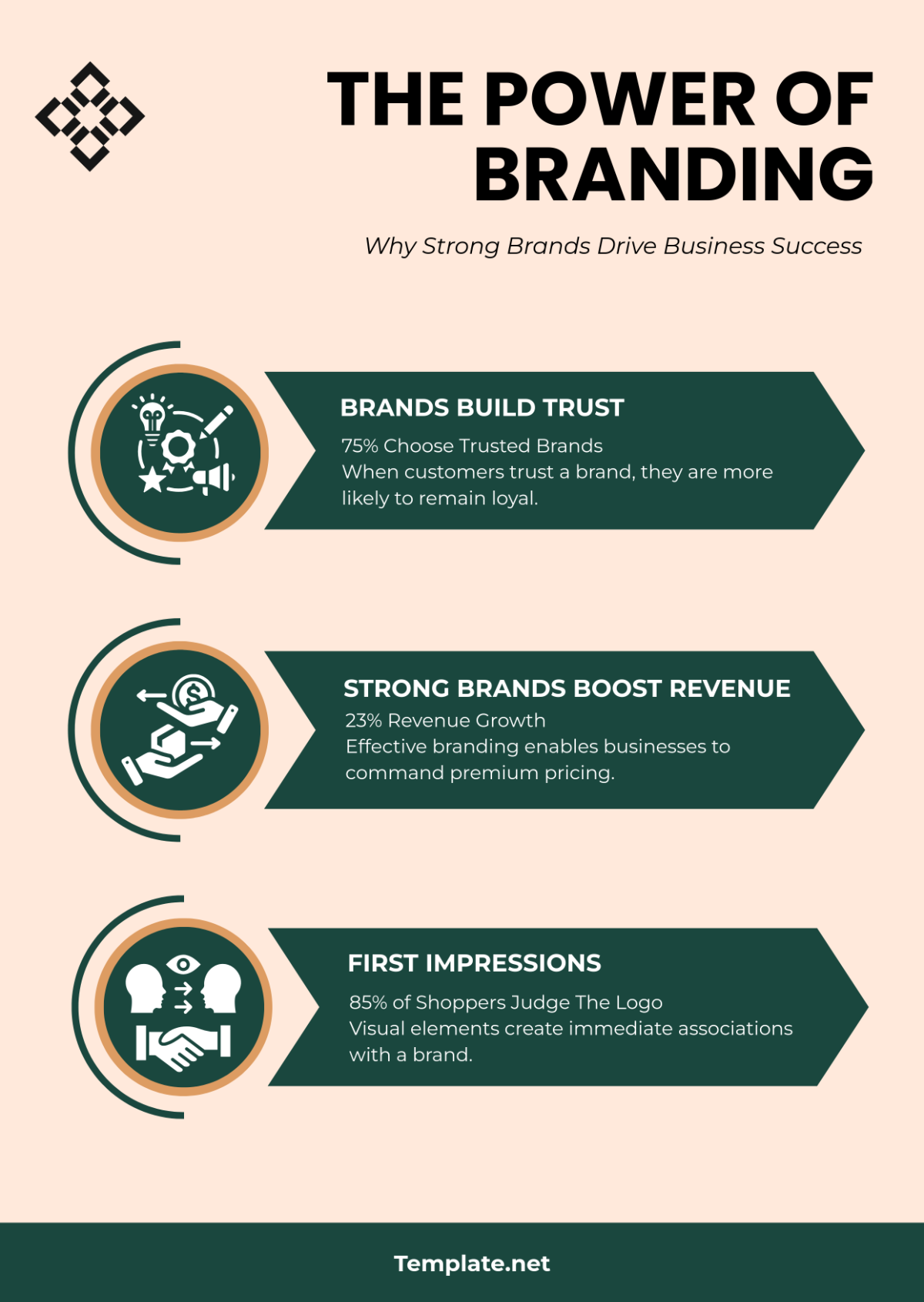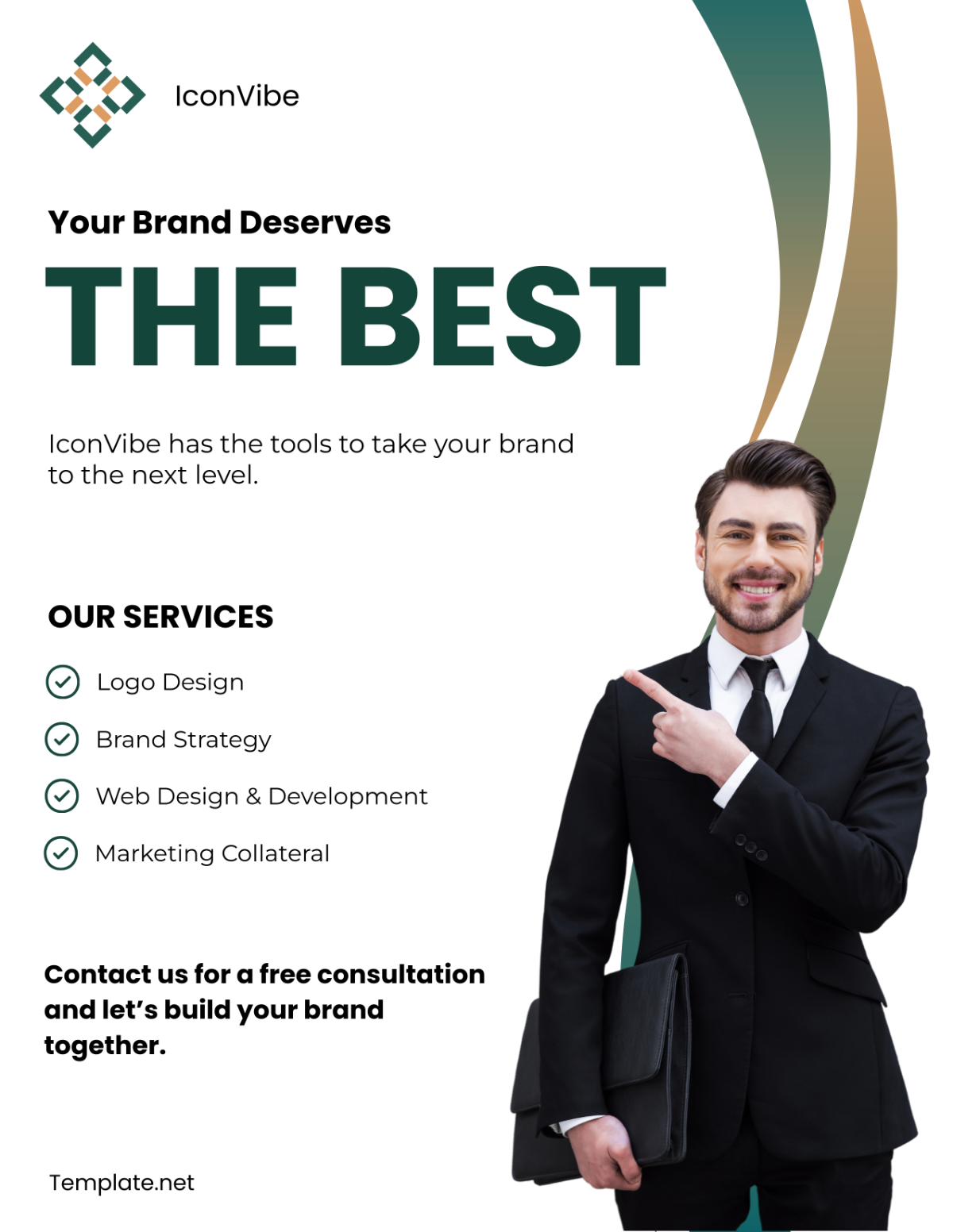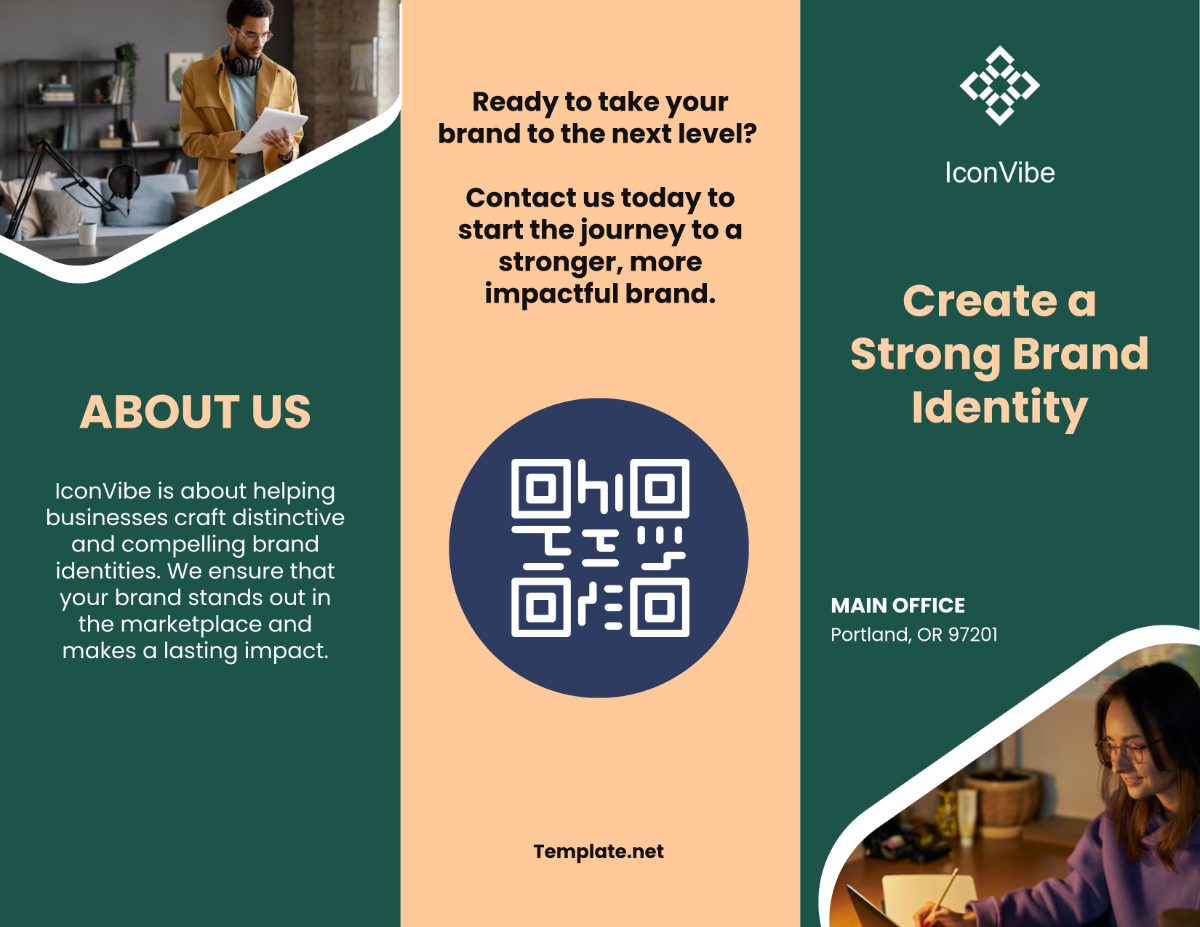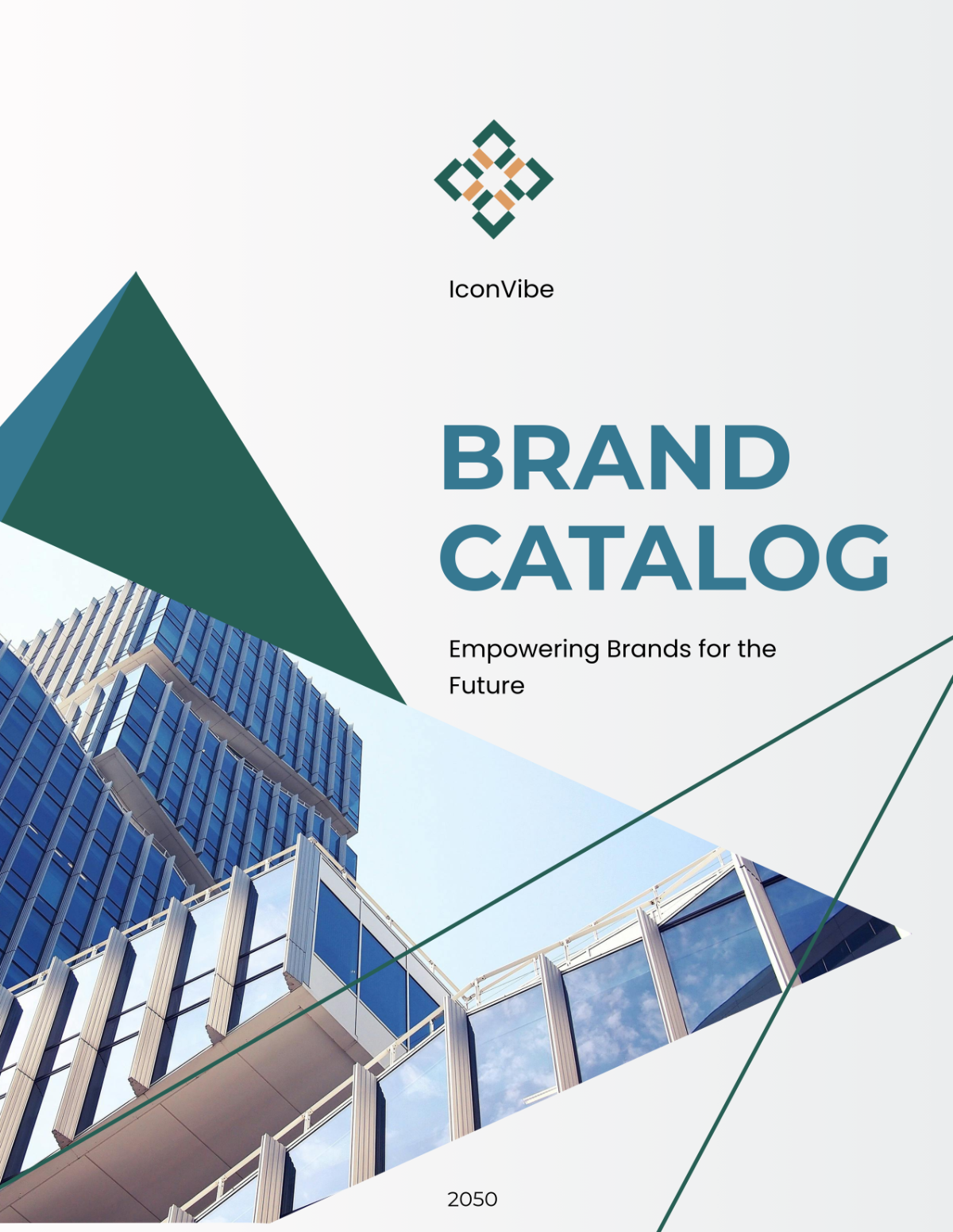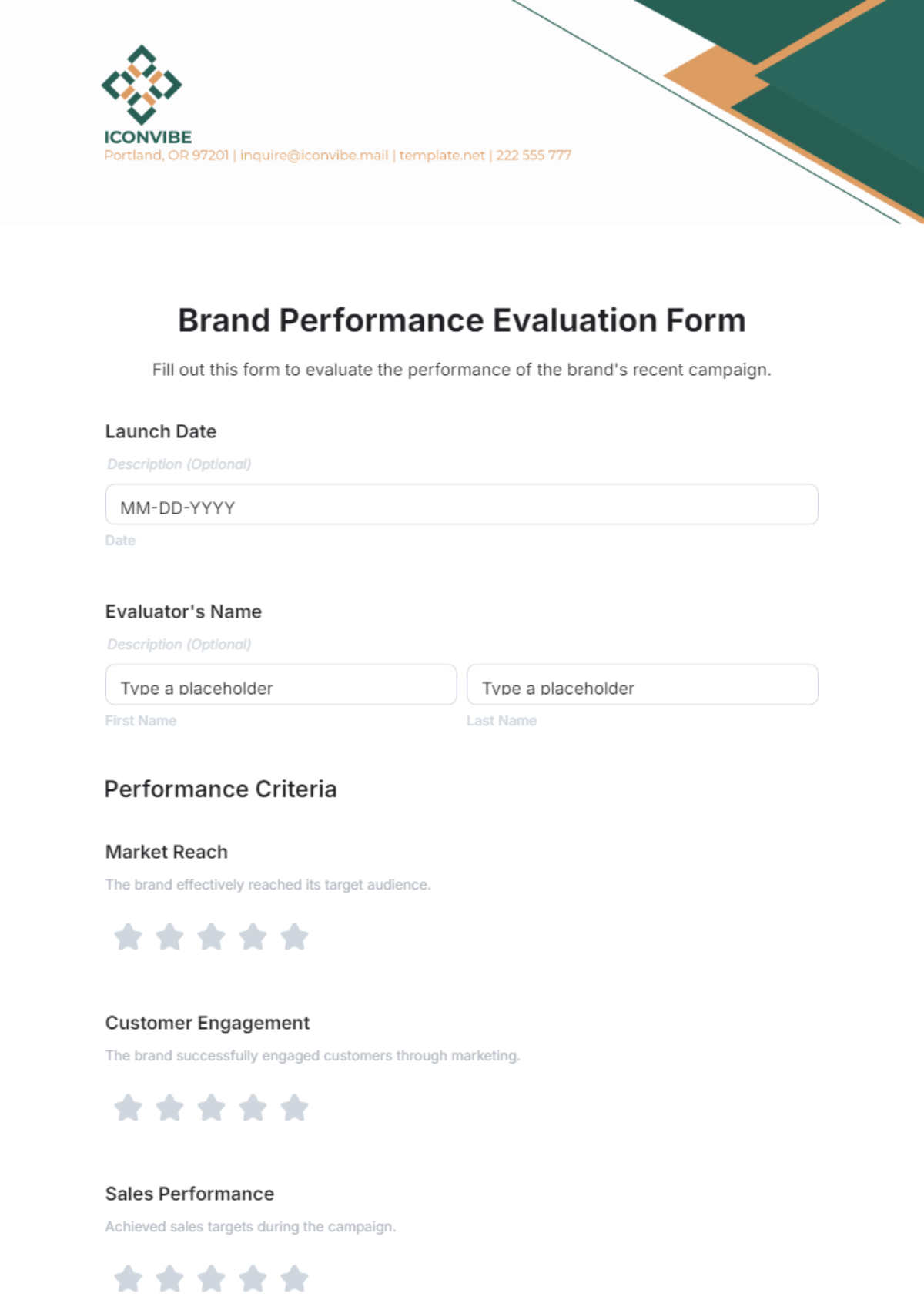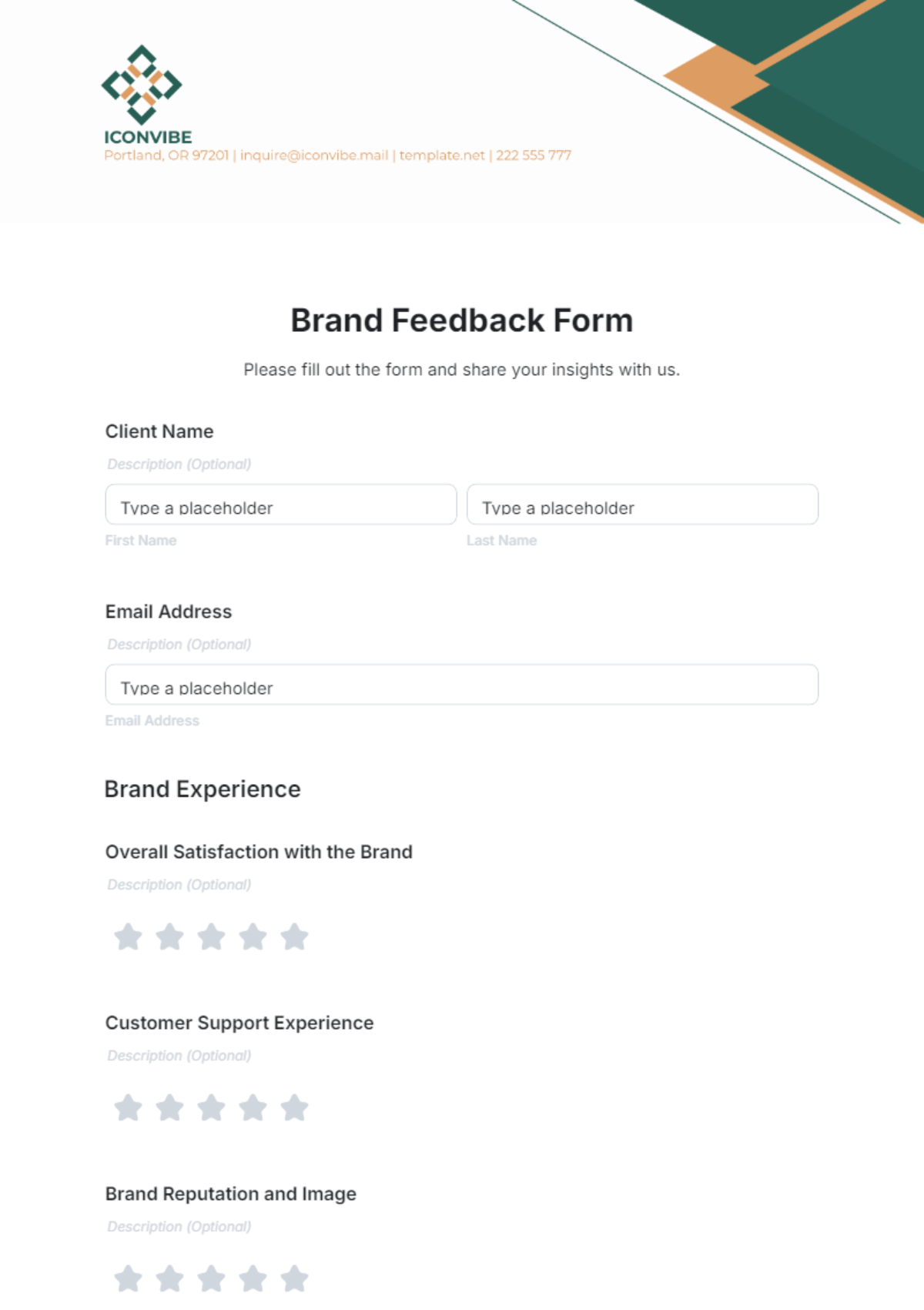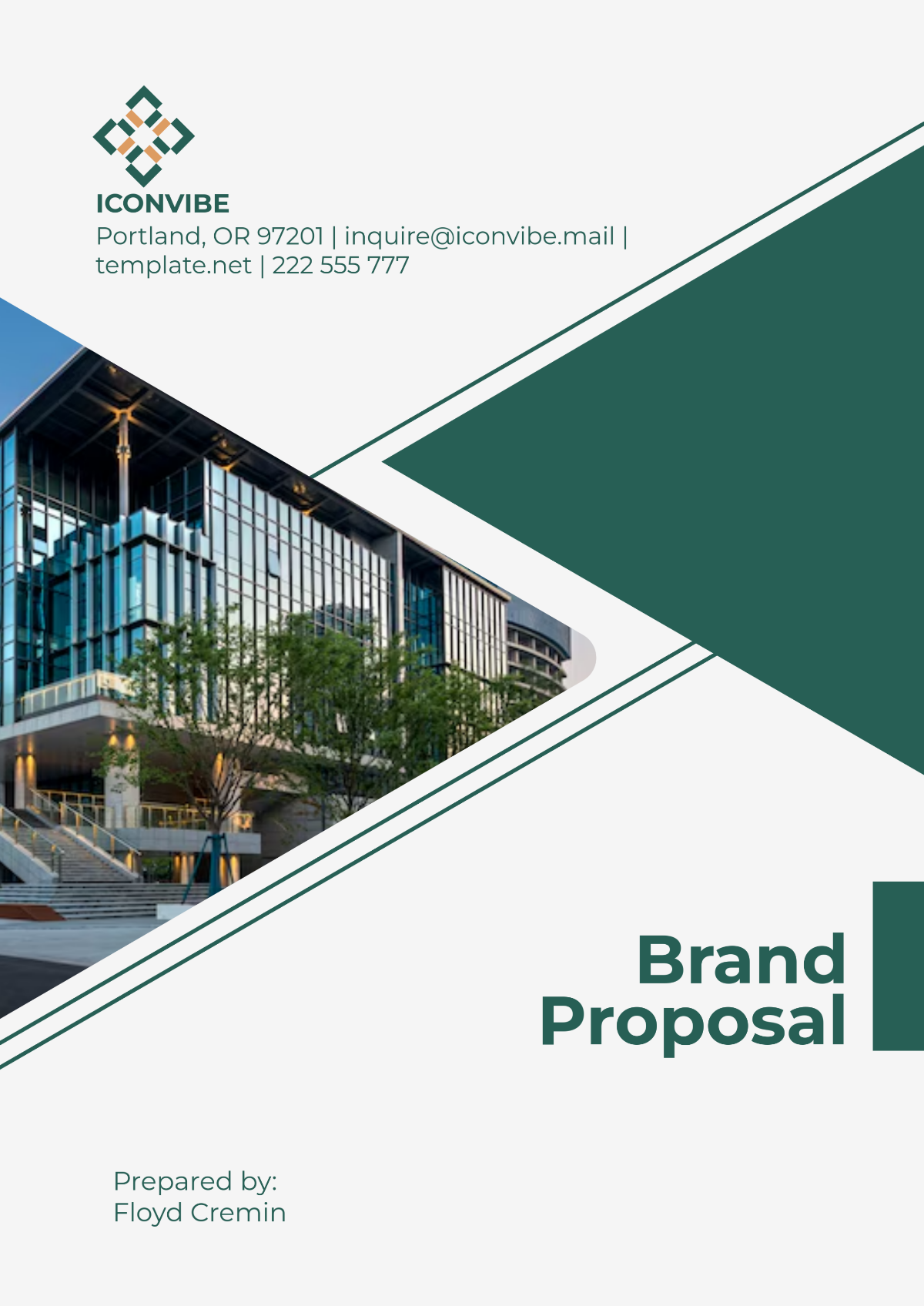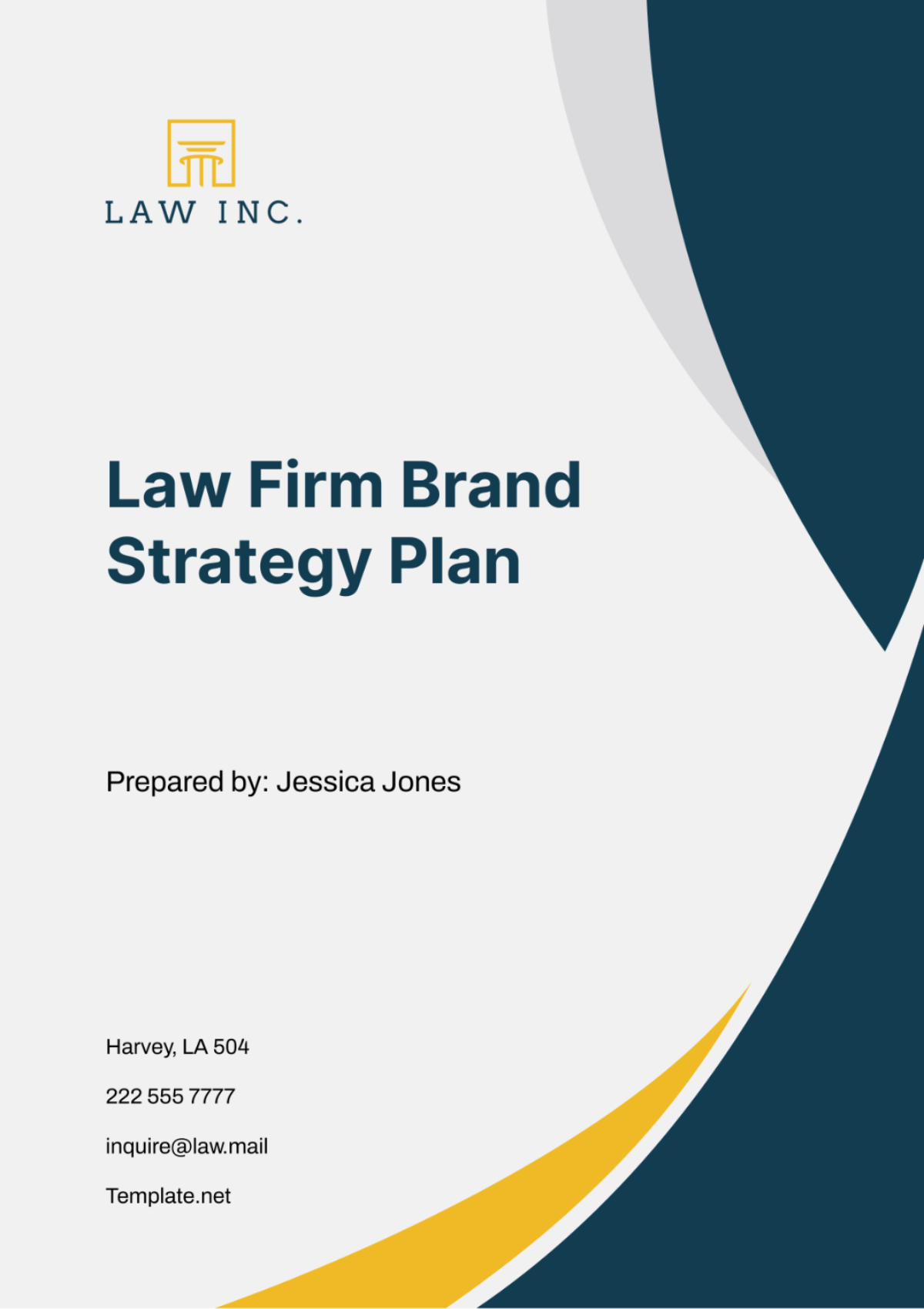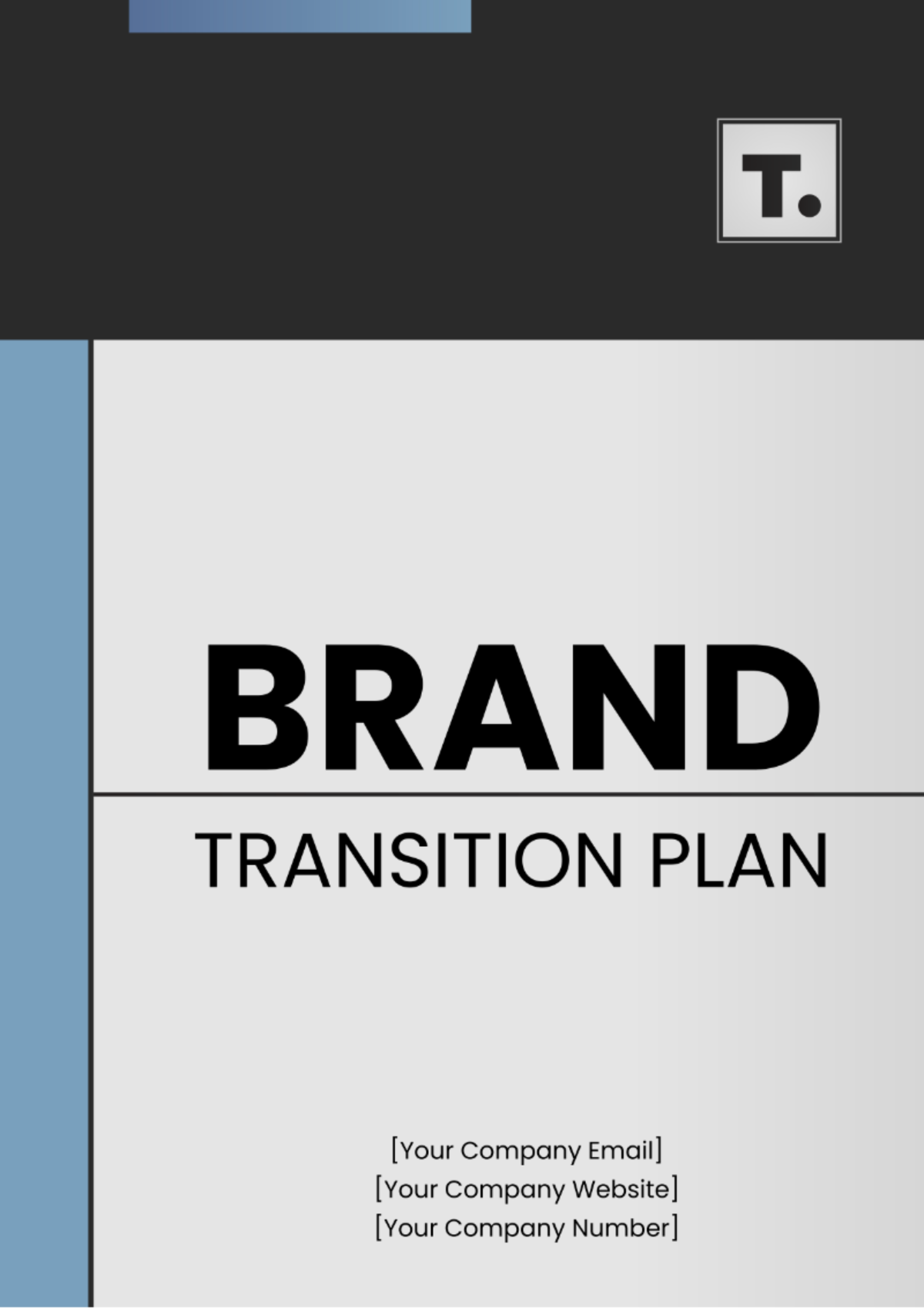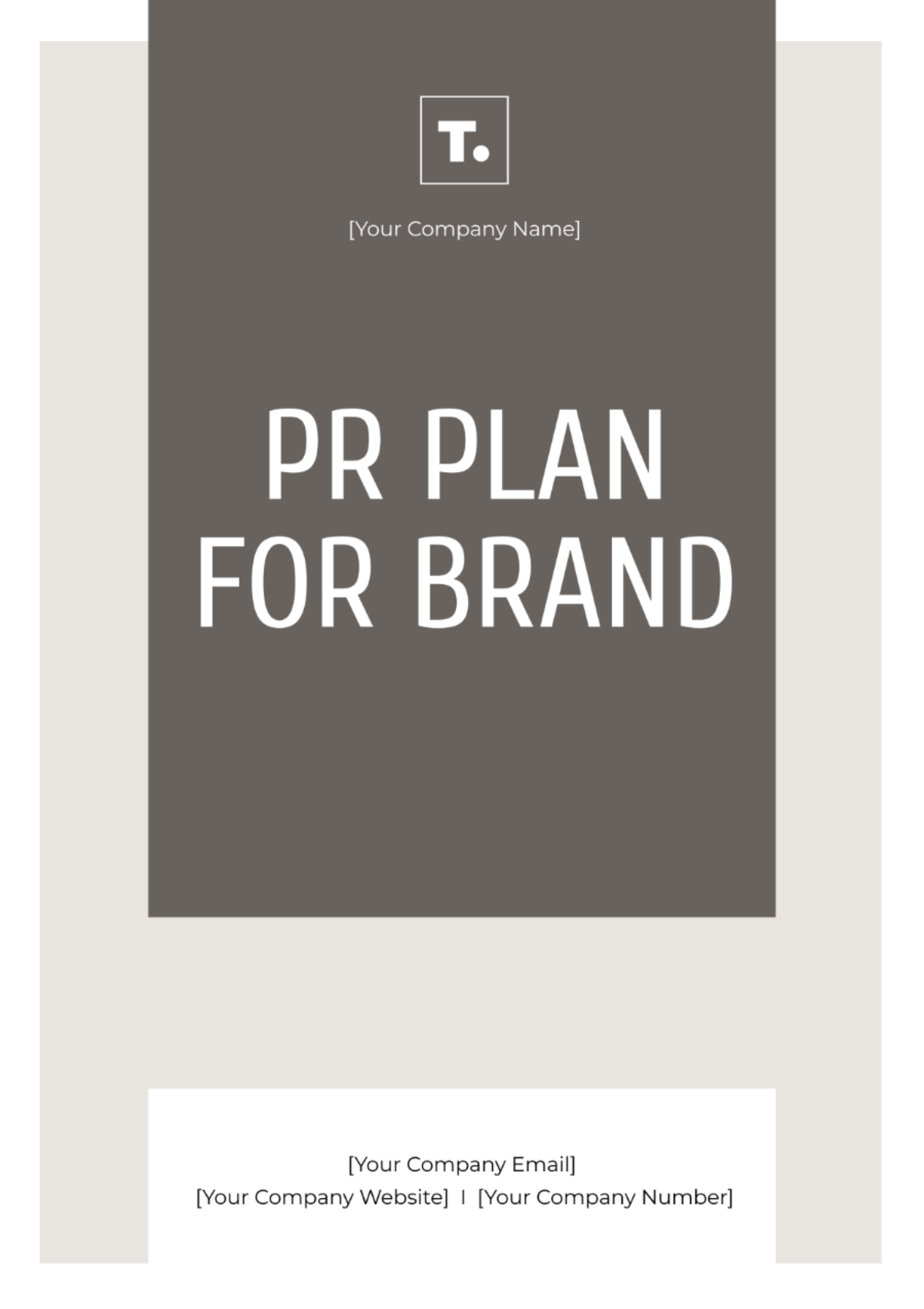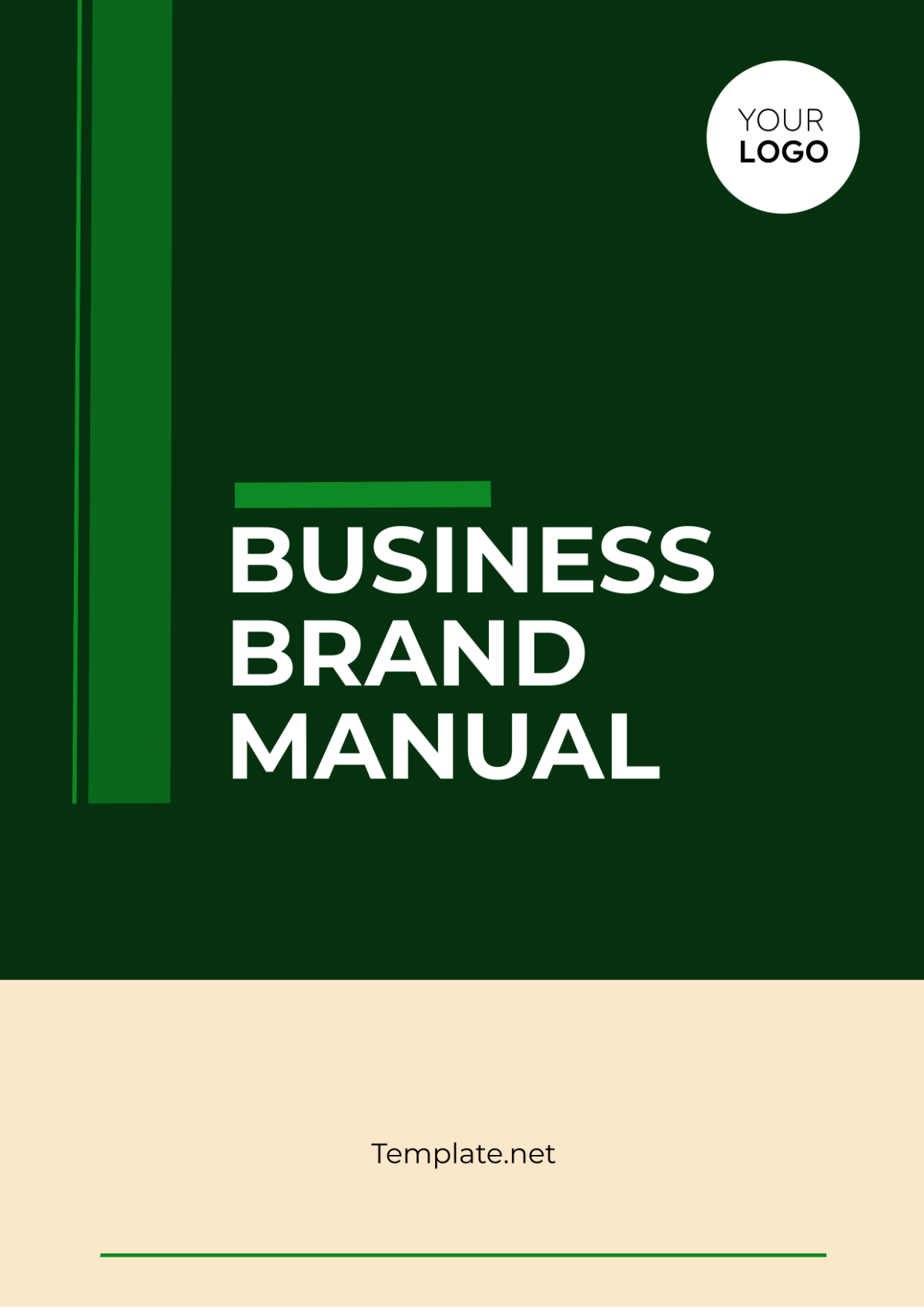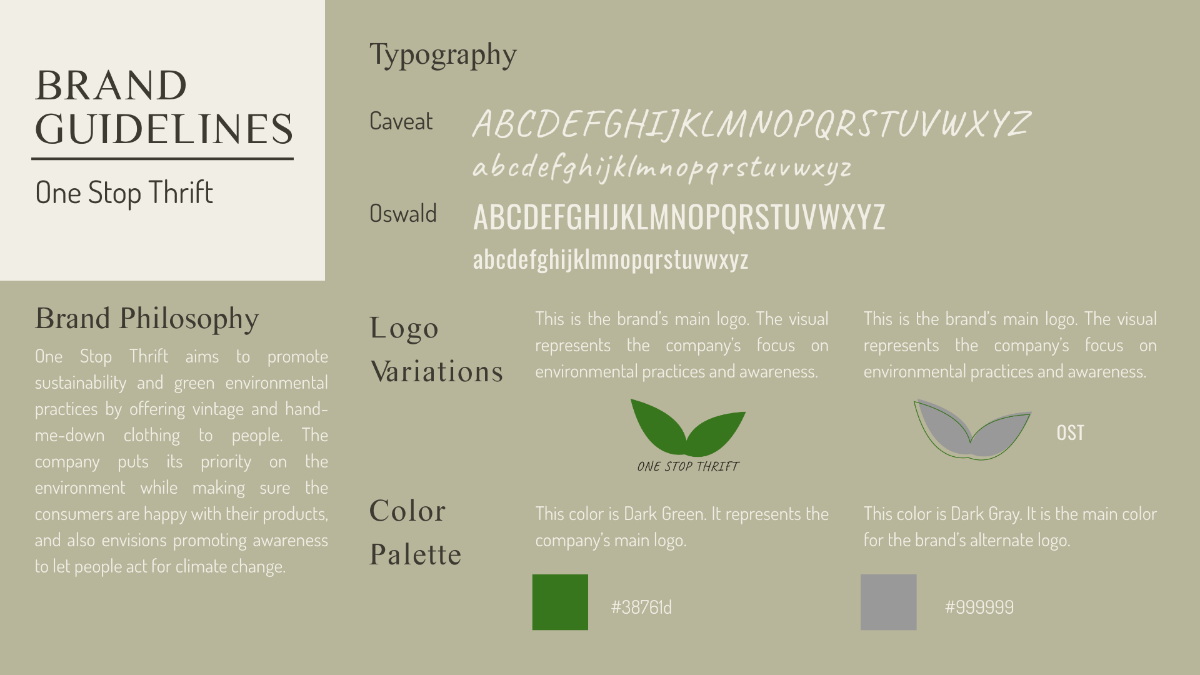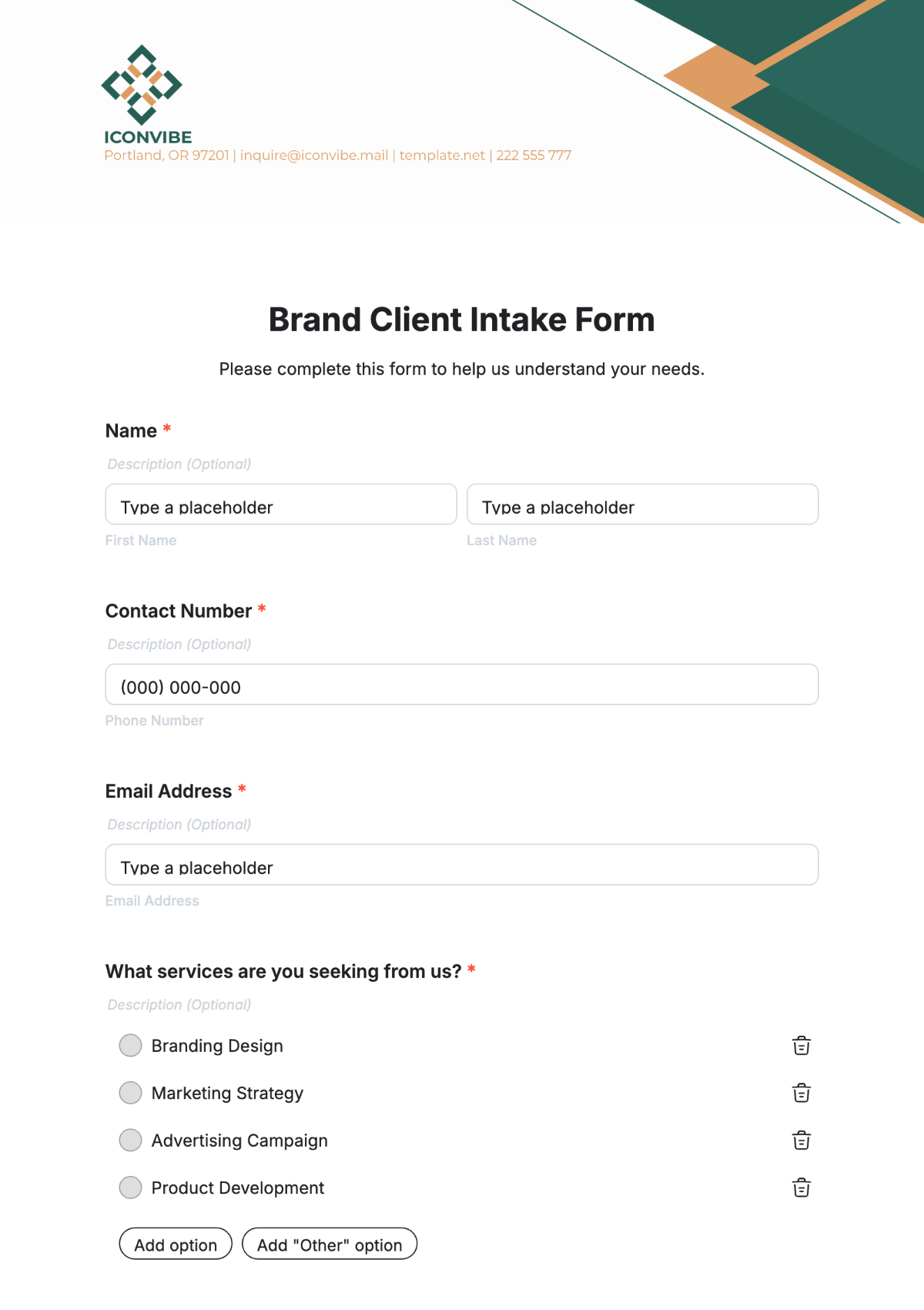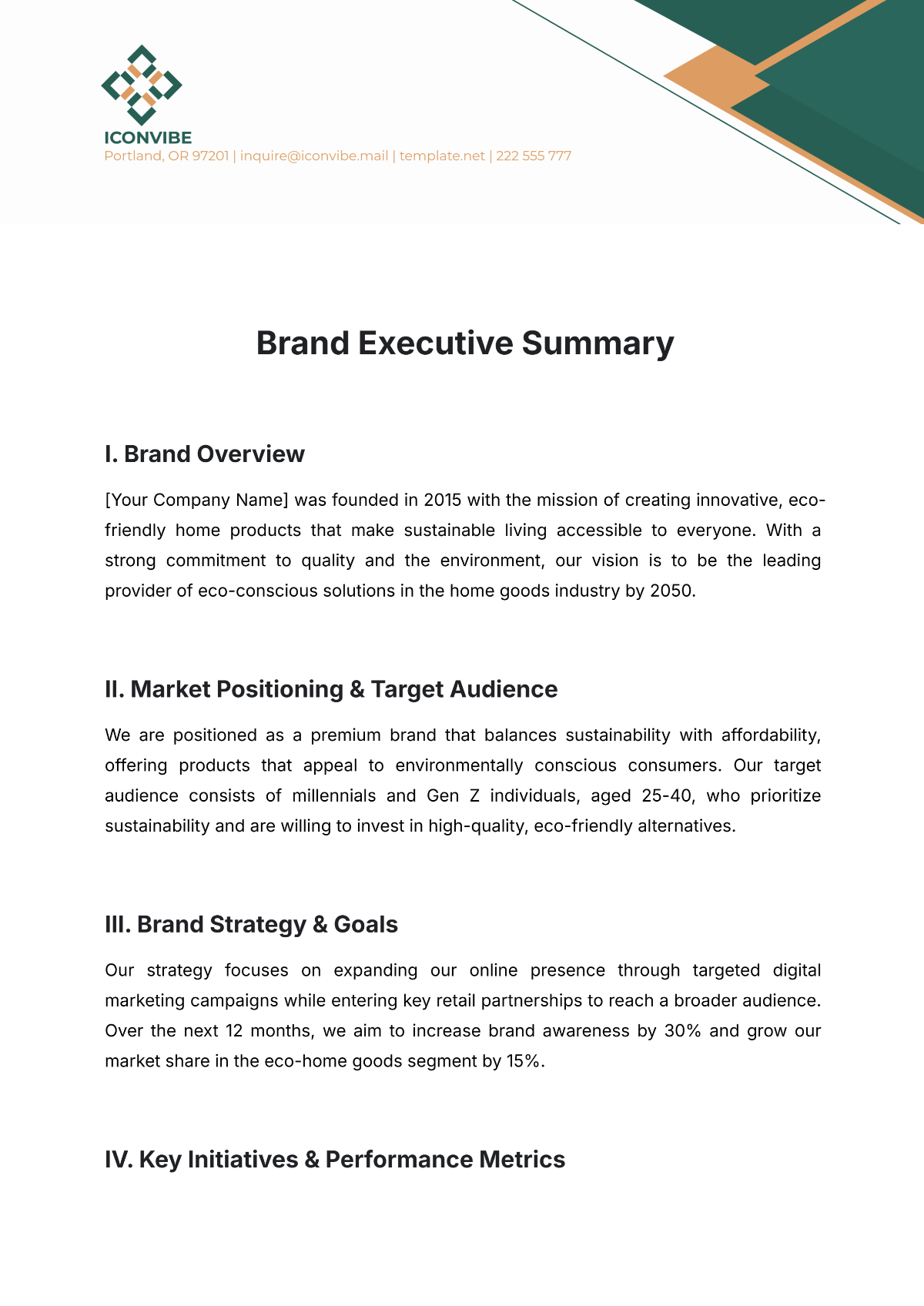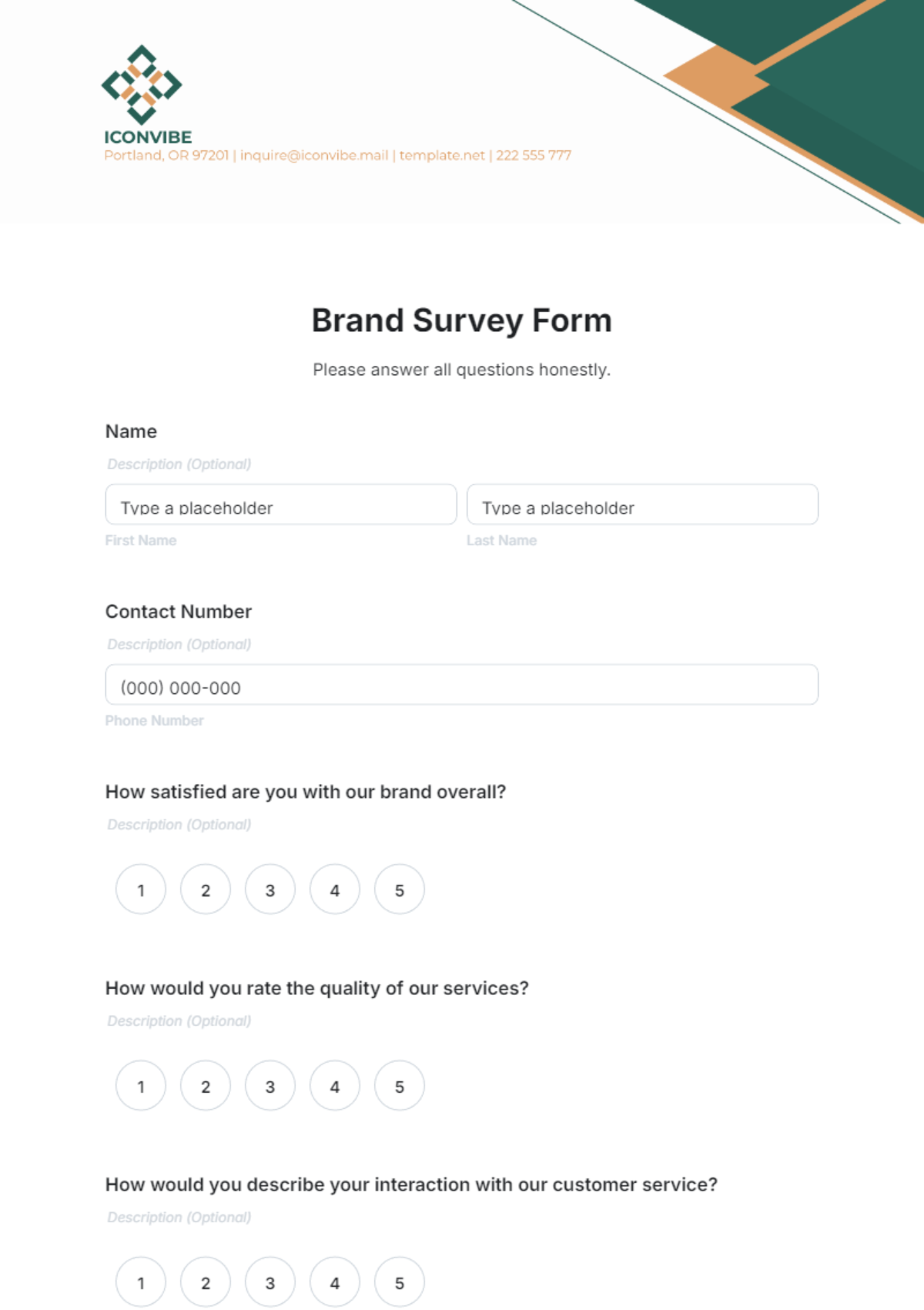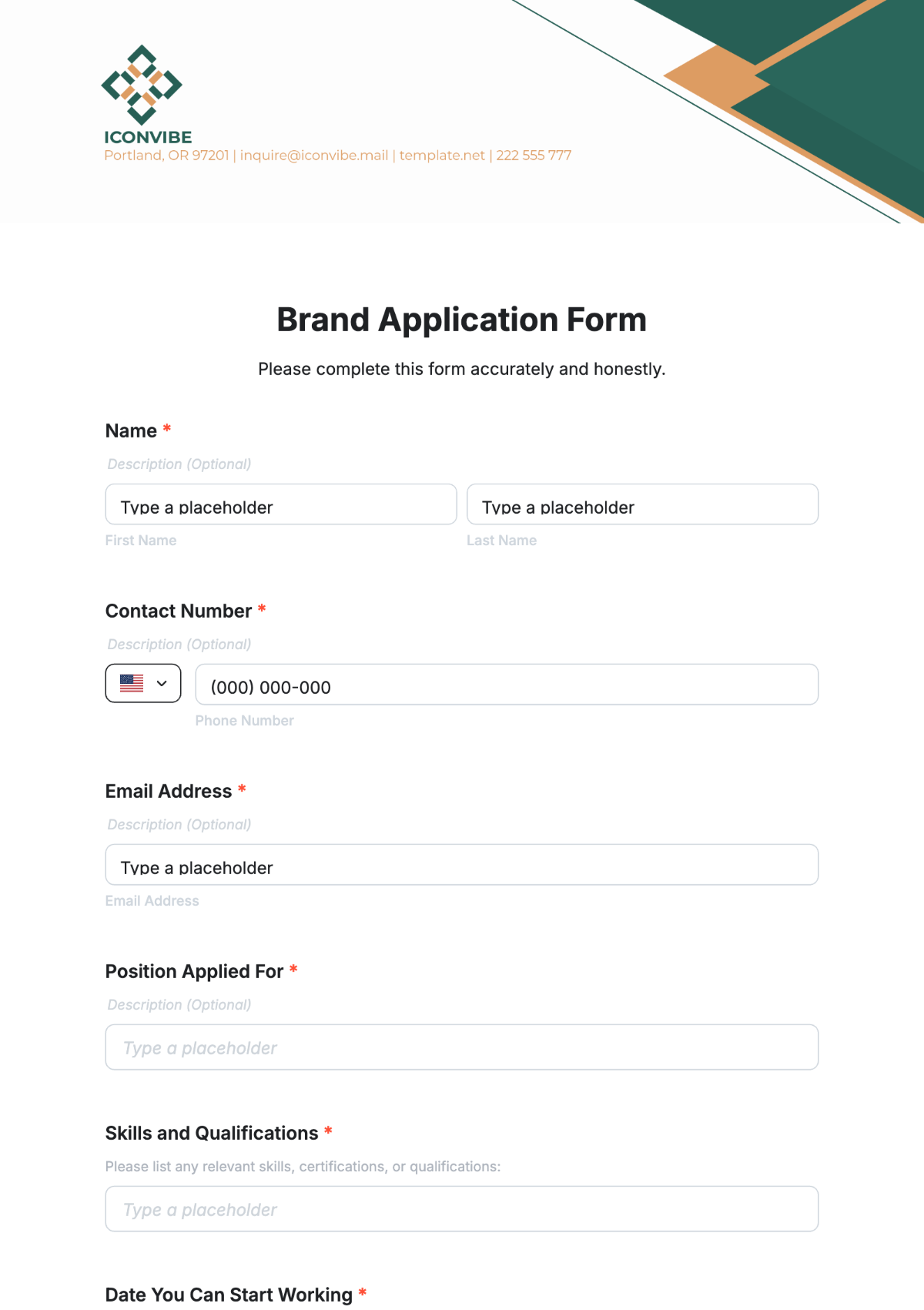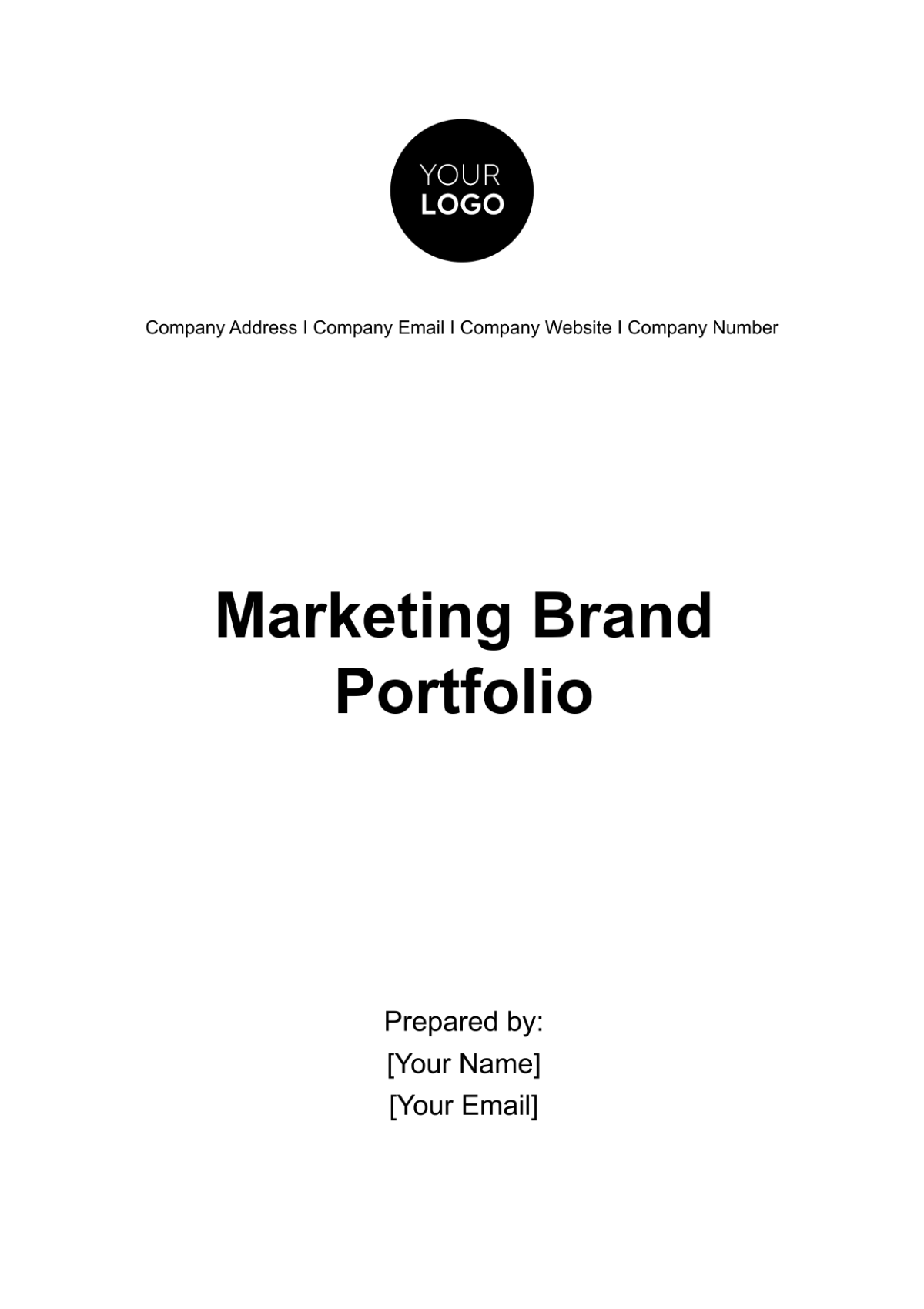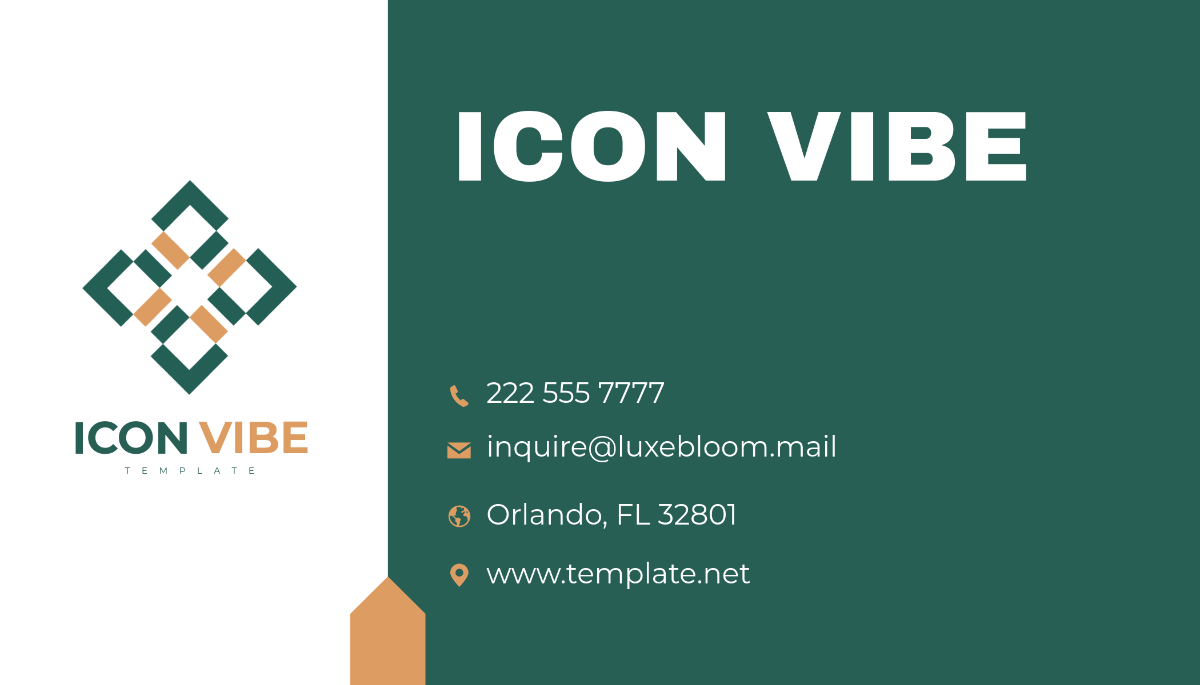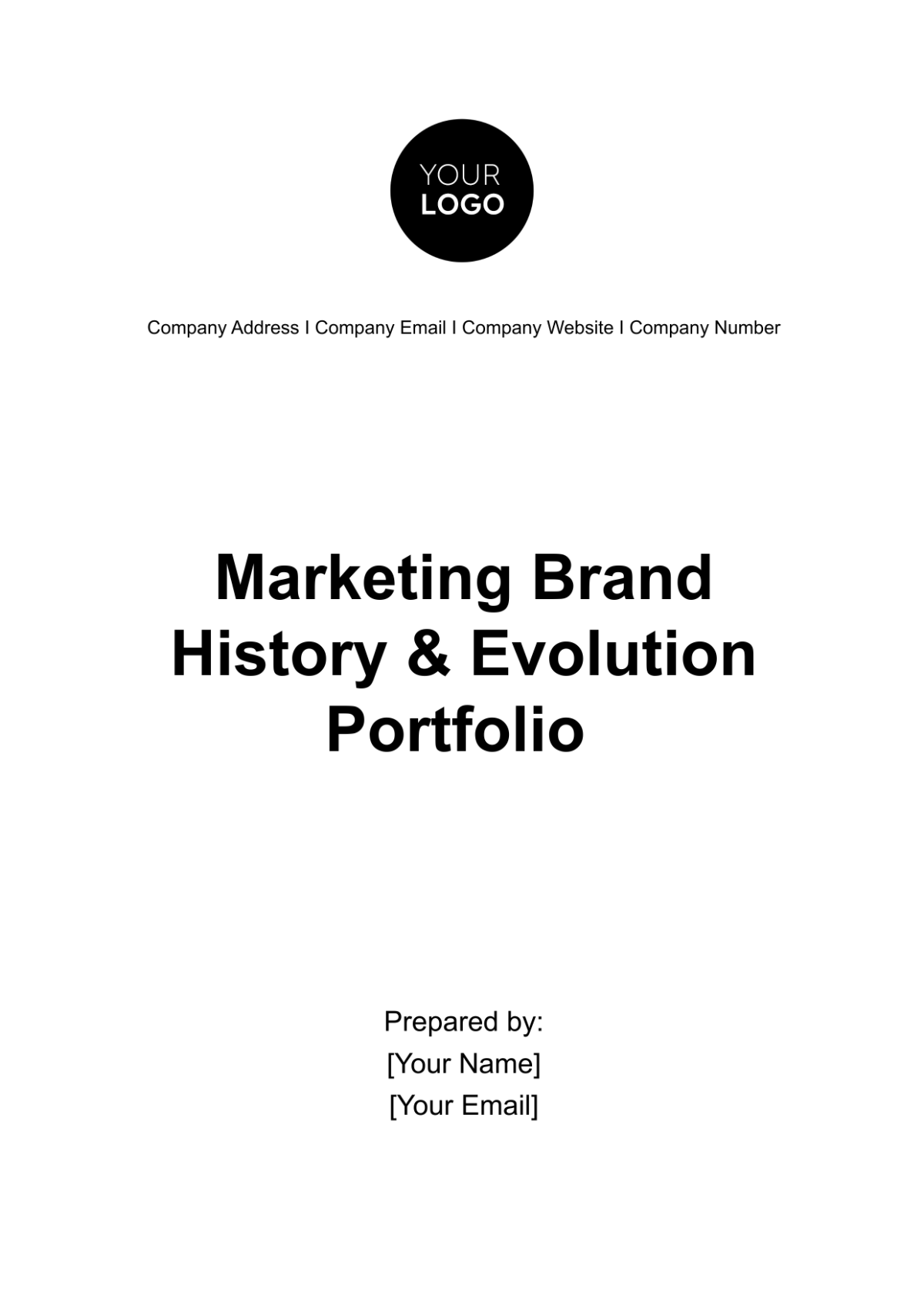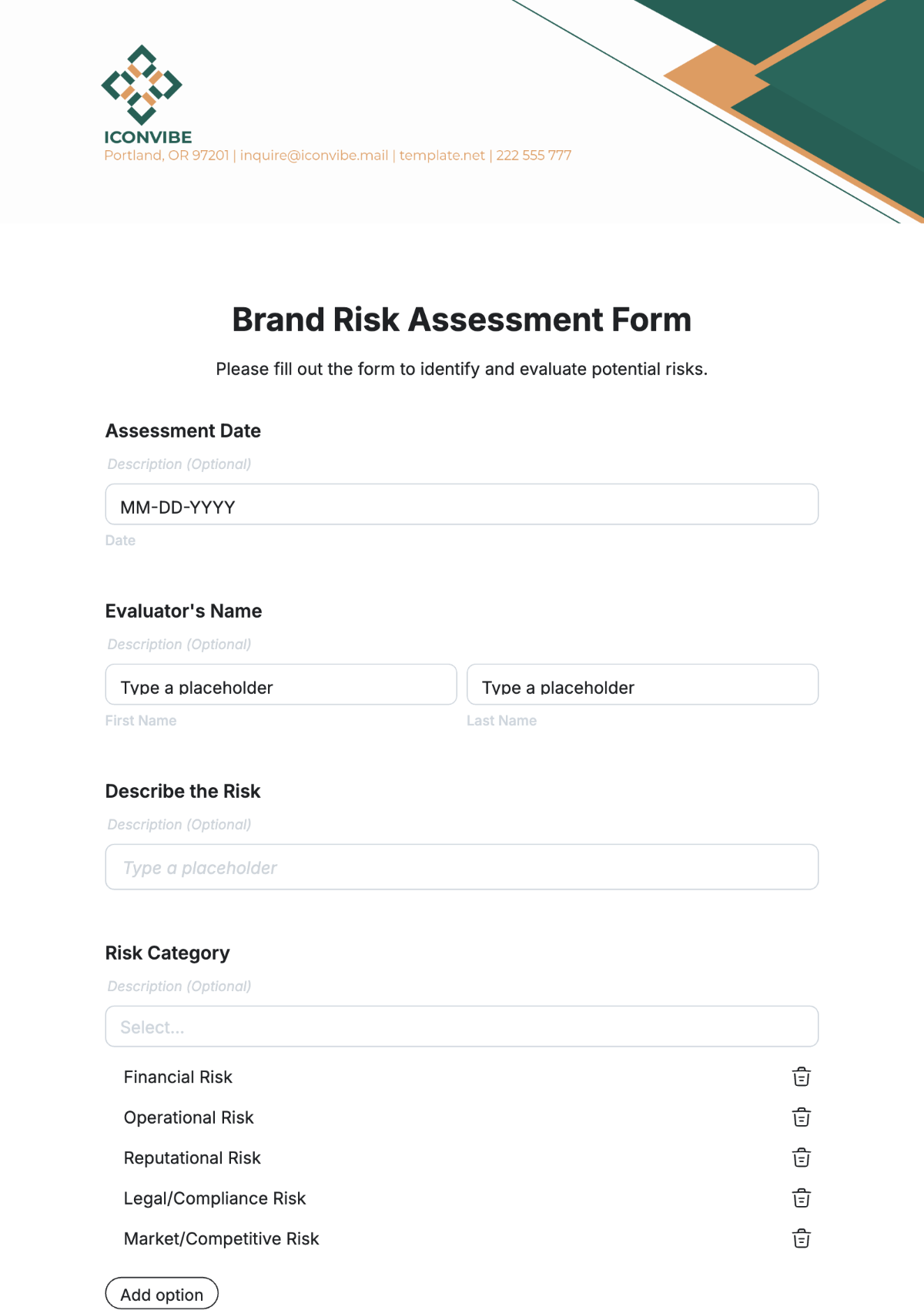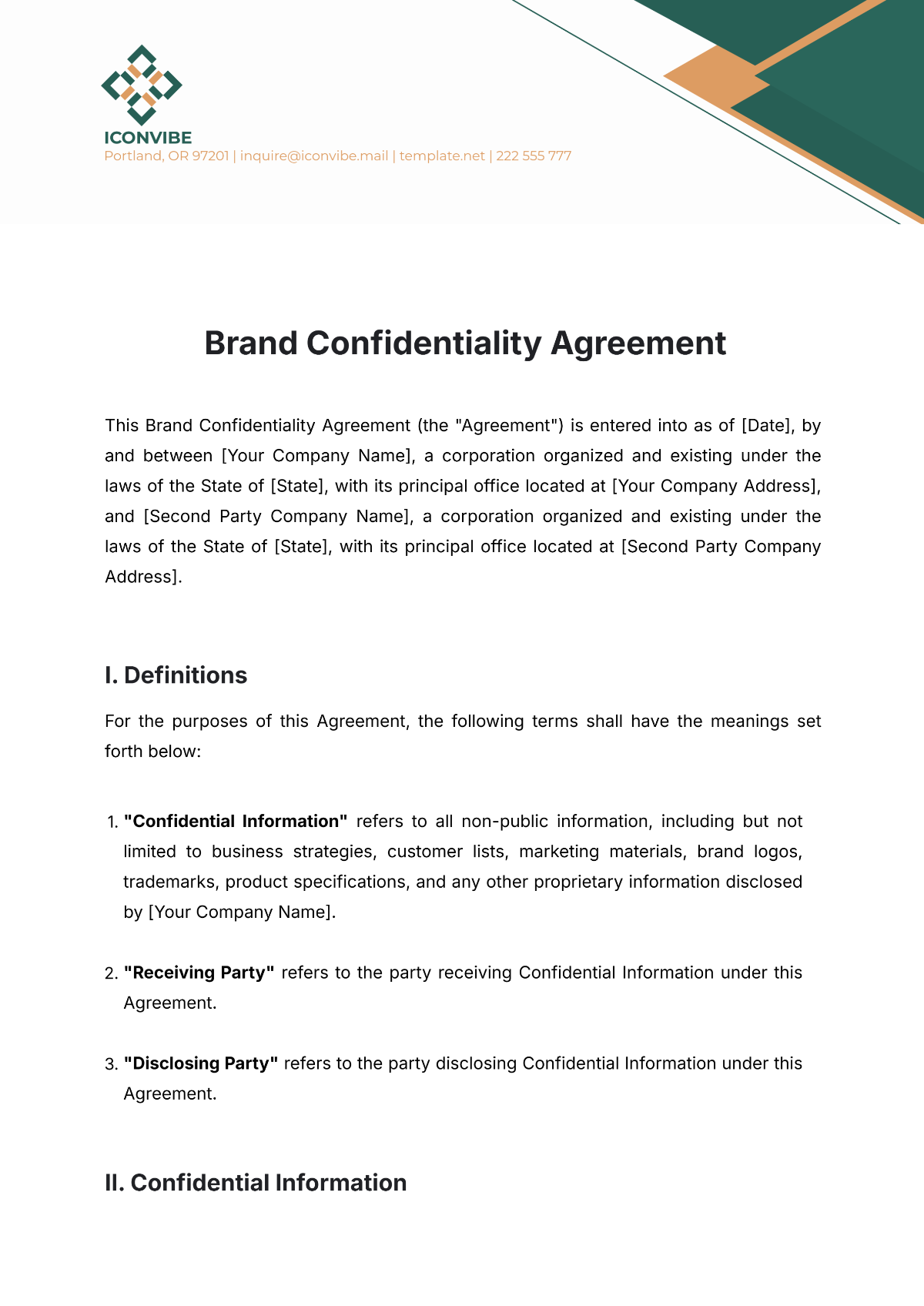Brand Messaging Advertising Architecture
Introduction
[Your Company Name] specializes in crafting impactful brand messaging that resonates with diverse audiences. Our approach is rooted in a strategic messaging architecture, designed to ensure consistency and impact across all communication channels. This document outlines the core components of our brand messaging architecture, providing a blueprint for conveying our value proposition and brand.
Core Brand Message
The core brand message of [Your Company Name] is a fundamental aspect of our organizational identity, serving as a concise expression of our mission, vision, and core values. This section delineates these elements, providing a clear and direct framework for our brand's communication strategy. It is imperative for these components to be consistently reflected across all our marketing and advertising efforts, ensuring a cohesive and strong brand presence in the industry.
Core Values:
The core values of [Your Company Name] are the principles that support our corporate culture and business practices. They include:
Principles | Details |
Innovation | Embracing creativity and seeking novel approaches in our work. |
Integrity | Upholding ethical standards and transparency in all our dealings. |
Impact | Striving to make a significant and positive influence on our clients and the industry. |
Collaboration | Fostering teamwork and partnership internally and with our clients. |
Excellence | Committing to the highest quality in our services and outputs. |
These components collectively form the essence of [Your Company Name]'s brand messaging, guiding our interactions with clients, stakeholders, and the wider market. They are instrumental in building a reputable and influential brand identity in the competitive industry of advertising.
Mission:
Our mission statement serves as the driving force behind our operational strategies and creative processes. It reflects our commitment to transforming the advertising industry through innovative and targeted messaging, catering to the evolving needs of our clients.
Vision:
The vision of [Your Company Name] outlines our long-term aspirations. It represents our ambition to lead the global advertising sector by setting new benchmarks in creativity and effectiveness. This vision motivates us to pursue excellence and innovation relentlessly.
Brand Personality
The brand personality of [Your Company Name] is a critical aspect of our brand identity, shaping the way we communicate with our audience and differentiating us in the advertising market. This personality is crafted to resonate with our clients and to reflect the values and aspirations of our organization. The following outlines the key traits of our brand personality, providing insight into how we present ourselves to the world and engage with our target audiences.
1. Innovative:
Our brand is characterized by a constant drive for innovation. We are committed to pioneering new methods and ideas in advertising, always seeking to challenge the status quo and introduce fresh perspectives.
2. Dynamic:
[Your Company Name] is adaptable and responsive to the ever-changing landscape of advertising and market trends. Our dynamic nature ensures that we are always ahead of the curve, delivering relevant and timely solutions to our clients.
3. Trustworthy:
Integrity forms the bedrock of our brand. We are dedicated to building trust with our clients through transparent and ethical practices. Our commitment to honesty and reliability is unwavering, ensuring that clients can depend on us for their advertising needs.
4. Professional:
Our brand exudes professionalism in every aspect of our work. From client interactions to the execution of advertising campaigns, we maintain a high level of expertise and conduct ourselves with the utmost professionalism.
5. Engaging:
We understand the importance of engagement in advertising. Our brand is approachable and relatable, creating connections with audiences through compelling and impactful messaging.
6. Forward-Thinking:
[Your Company Name] is focused on the future. We anticipate market shifts and emerging trends, positioning ourselves and our clients to take advantage of new opportunities.
This set of traits encapsulates the essence of [Your Company Name]'s brand personality. Each characteristic is carefully cultivated to ensure that our brand is revered in the advertising industry for its distinct and admirable qualities. These traits guide our approach to all aspects of our business, from internal culture to client interactions and campaign strategies.
Target Audience
Understanding and accurately identifying the target audience is vital for [Your Company Name] to deliver effective and impactful advertising solutions. Our target audience encompasses a range of segments, each with unique characteristics and specific advertising needs. The following details these key segments, providing a foundational understanding of whom our services are designed for and how we tailor our approaches to meet their distinct requirements.
1. Businesses (Small to Medium Enterprises):
a. Characteristics: These entities often require innovative yet cost-effective advertising solutions that can elevate their brand presence in a competitive market. They value personalized services and creative approaches that align with their unique brand identities.
b. Specific Needs: Customized advertising strategies, brand development, and market penetration solutions.
2. Corporates (Large Organizations):
a. Characteristics: This segment includes established companies seeking strategic brand positioning and high-impact advertising campaigns. They demand a sophisticated approach that aligns with their extensive market presence and brand reputation.
b. Specific Needs: Comprehensive advertising campaigns, brand consistency across various media, and market leadership strategies.
3. Startups:
a. Characteristics: Emerging companies in need of establishing a strong brand presence from the outset. They are often looking for innovative and disruptive advertising strategies that can make a significant impact with limited resources.
b. Specific Needs: Brand identity creation, market entry strategies, and digital-first advertising solutions.
4. Consumer Market:
a. Characteristics: End consumers are characterized by diverse demographics, behaviors, and preferences. Understanding this segment is crucial for creating relatable and engaging content.
b. Specific Needs: Targeted advertising campaigns, consumer behavior analysis, and engagement strategies.
5. Digital Natives:
a. Characteristics: A tech-savvy audience accustomed to digital platforms. They value authenticity, interactivity, and creativity in advertising.
b. Specific Needs: Social media campaigns, influencer collaborations, and interactive digital content.
By addressing the characteristics and needs of these groups, we ensure the delivery of our advertising solutions, thereby enhancing our clients' brand visibility and market impact.
Key Messages
Key messages are a crucial element in the communication strategy of [Your Company Name]. These messages are designed to succinctly convey our core values and unique selling propositions to our target audience. They serve as the foundation for all our marketing and advertising content, ensuring consistency and clarity in our brand communication. Below is a table that outlines our key messages, each aligned with a specific objective to effectively address different aspects of our brand and client engagement.
Aspect | Key Message |
Brand Awareness | Innovating Advertising, Impacting Audiences |
Client Engagement | Elevating Your Brand, Creating Connections |
Market Positioning | Setting New Standards in Advertising Excellence |
Innovation and Creativity | Transforming Ideas into Impactful Realities |
Trust and Reliability | Your Trusted Partner in Brand Success |
Sustainability and Social Responsibility | Advancing Brands with Responsibility and Vision |
Purpose of Messages:
1. Brand Awareness:
This message emphasizes our commitment to bringing innovative solutions to the advertising industry, highlighting our role in influencing and engaging diverse audiences. It's designed to position [Your Company Name] as a leader in creative advertising.
2. Client Engagement:
Focusing on how we enhance client brands and forge strong connections with their target audience. This message underlines our dedication to working closely with clients to understand and meet their unique needs.
3. Market Positioning:
This communicates our aspiration to be at the forefront of the advertising industry. It reflects our ambition to lead by example, constantly raising the bar for quality and innovation in our services.
4. Innovation and Creativity:
Highlighting our ability to turn creative concepts into effective advertising campaigns. This message showcases our strength in innovation and our focus on generating tangible results for our clients.
5. Trust and Reliability:
Reinforcing our commitment to building long-lasting, trust-based relationships with our clients. It underscores our reliability and dedication to contributing to our clients' success.
6. Sustainability and Social Responsibility:
Reflecting our commitment to sustainability and ethical practices in advertising. This message aligns with the growing consumer and corporate emphasis on social responsibility.
These key messages are integral to the strategic communication of [Your Company Name], ensuring that we consistently project a brand image that is aligned with our values and resonates with our audience. They guide the development of our advertising campaigns and inform our interactions with clients, stakeholders, and the wider community.
Communication Channels
Selecting the right communication channels is imperative to effectively deliver our key messages and engage with our target audience. Our choice of channels is strategic and tailored to maximize reach and impact. This section details the various communication channels we utilize, each chosen for its specific strengths and audience reach. Understanding each channel allows us to craft a well-rounded and impactful communication strategy.
Channel | Advantages |
Digital Media | High reach, cost-effectiveness, audience targeting, and immediate feedback mechanisms. |
Print Media | High engagement potential, community building, brand personality expression, and wide reach. |
Broadcast Media | Wide reach, audio-visual appeal, and emotional connection. |
Outdoor Advertising | High visibility, wide reach, and location-specific targeting. |
Event Marketing and Sponsorships | Direct engagement, community involvement, and experiential marketing. |
Content Marketing | Thought leadership, audience education, and long-term relationship building. |
Purpose of Channels:
Digital Media:
To engage with a tech-savvy audience, leveraging the power of digital platforms for targeted and interactive advertising. Digital media channels such as websites, online advertisements, and email campaigns are pivotal in reaching a wide audience, offering measurable analytics and real-time feedback.
Print Media:
To establish credibility and reach audiences that prefer traditional media. Print channels like newspapers, magazines, and brochures are essential for reaching certain demographics and for providing tangible, lasting brand material.
Social Media:
For real-time engagement, brand personality showcase, and viral marketing. Platforms like Facebook, Instagram, Twitter, and LinkedIn are crucial for engaging directly with consumers, building brand communities, and driving user-generated content.
Broadcast Media:
To reach a broad audience through television and radio. These channels are effective for building brand awareness and delivering messages with emotional and audio-visual impact.
Outdoor Advertising:
To capture audience attention in public spaces. Billboards, transit advertisements, and digital signage are powerful tools for generating high-impact visibility and brand recall.
Event Marketing and Sponsorships:
To create immersive brand experiences and foster community engagement. Participating in industry events, trade shows, and sponsoring relevant events aligns our brand with specific interests and communities.
Content Marketing:
To provide value to our audience through informative and engaging content. Blogs, whitepapers, podcasts, and webinars allow us to establish thought leadership and nurture relationships with our audience.
By leveraging these communication channels, [Your Company Name] ensures that our brand messages are conveyed effectively to our varied target audience segments. This approach allows us to build a robust and dynamic presence in the advertising landscape, catering to the preferences and behaviors of different consumer groups.
Conclusion
[Your Company Name]'s Brand Messaging Architecture is a framework designed to guide all aspects of our communication strategy. By adhering to this architecture, we ensure that our messaging is consistent, resonates with our target audience, and upholds our brand values. Our commitment to innovation, integrity, and impact positions us as a leader in the advertising industry, poised to meet the needs of our clients.




